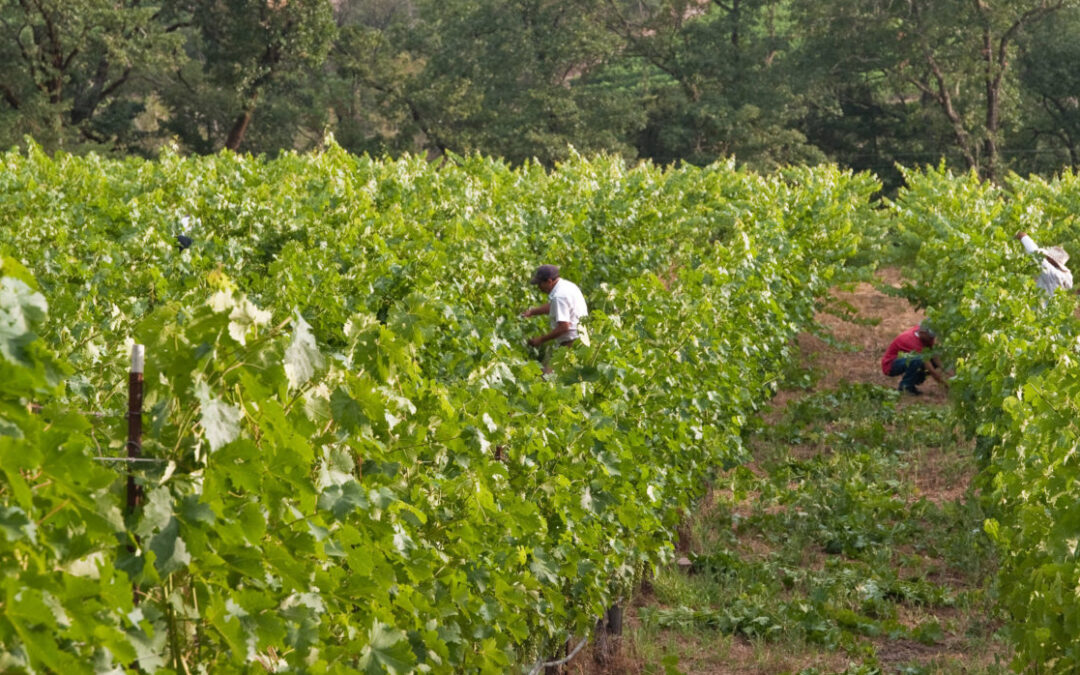Managing tannins is key to making wine on Diamond Mountain- all those lovely aromas and flavors can be overwhelmed by hard mountain tannins if not managed properly. And like most things in winemaking, that management starts in the vineyard. We are already doing tannin management for the 2015 Cabernet Sauvignon. We recently removed excessive shoots (shooting, so to speak, for 15 shoots per meter), so that the clusters will ripen in an environment of dappled light rather than shade. We are following the wisdom of Goldilocks when it comes to sun exposure: not too much, not too little, but just right. In excessive shade, the skin tannins will be like sandpaper in the mouth. If there is sunburn, they will not form at all. With just the right amount of light they will become supple and plush, and do so in a timely manner—that is, before the sugar levels get too high. High concentration of sugar (aka “brix”) directly leads to high alcohol, which in turn destabilizes tannins (and may destabilize us end users as well). But it’s not all about us—the vines’ goal is to produce berries with juice sweet enough to attract birds, without assaulting them with bitter and astringent compounds in the skins and seeds. In nature the birds then help propagate the vines by dropping the seeds (it is considered lucky to get hit)!
Soon we will be cluster thinning—leaving no more than two clusters per shoot. Managing yield involves the balance between leaves and fruit, which affect the rate of ripening. Pulling leaves in the fruit zone helps too—but again this is a matter of balance (remember the goal is dappled light). Later we will be green thinning—removing clusters that are slow to turn color, so as to promote an even ripening.
The decision of when to pick is a critical part of tannin management. In the past the focus was on achieving a target brix level. Now we realize that brix and tannin do not necessarily ripen at the same rate. As green seeds are reservoirs of harsh and bitter compounds, we observe and taste the seeds, picking after they are brown and crunchy—like “grape-nuts.” Lucky for us that on our site tannins are ripe at relatively low brix, as the last, critical stages of ripening occur slowly in the cooler and shorter days of fall. On a more sun-exposed site, sometimes the sugar accumulation runs ahead of tannin maturity.
Forty years ago when we came to the valley, these practices were not common. Growers were anxious to rush grapes to the wineries when the target brix level specified in the contract was achieved. Migrant workers often arrived just in time to pick the fruit, making intensive hand-work difficult to achieve anyway. Now we realize that throughout the season we must keep our eyes on the prize: supple, rich, plush tannins. As you can see, this is an ongoing obsession!

